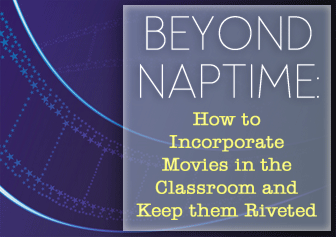10 Methods to Incorporate Drama in the ESL Classroom


Often the movie happens to be a personal favorite of the teacher. (I’m a big fan of “My Big Fat Greek Wedding.”) Movie days can be a break from the regular curriculum, and valuable learning can take place as movies use contextualized language and teach culture.
However, there is the danger of students nodding off or texting their friends rather than watching the movie. What are ways to prevent this?
Sometimes the movie itself is a problem. It isn’t necessarily easy to choose a movie that is engaging, appropriate, and in some way instructive. Following is a brief list of films I’ve had success with. Needless to say, the instructor should always preview the film to make sure it will be appropriate for her individual class:

Classic musical of Tevye the milkman and his family in a Jewish village in turn of the twentieth century Russia. Students relate to Tevye’s struggles and dreams.
Musical retelling of the Romeo and Juliet story set in Manhattan between two warring gangs, The Crips and The Jets. Much of the story is still relevant after sixty years, such as the theme of trying to survive in a hostile urban environment.
Romantic comedy between the Greek American Toula and her WASP fiance, Ian. Students respond readily to the cultural conflict between the two families.
In this Jennifer Gardner comedy, her character, Anna, lives in a fictional world with the main character, Mark — a world where lying hasn’t been invented yet. Mark works as a screen writer where “actors” just read aloud real-life stories. After Mark invents lying, the real complications ensue. Good for ethical and cultural discussions about when it would be appropriate to lie and when not.
Julia Roberts plays Erin Brockovich, in a real-life story of a single mother who discovered PGE dumping waste materials in a town’s water supply and fought them in a landmark case. Students find the character inspirational.

Introduce the movie a day before hand, as you would a reading, discussing its plot and characters and relate it to the curriculum. For example, when showing “Fiddler on the Roof,” I’ve explained the major conflicts in the movie related to the characters’ being cultural minorities, which mirrors many of the students’ situations. I also give out the lyrics to “If I Were a Rich Man,” which models the unreal conditional.
To keep students attuned to the movie, give them a series of questions to focus them. The questions should focus on both global aspects of the movie: “Where is the story set?” and more detailed aspects of it: “What is the name of the restaurant owned by Toula’s family?’ to really make sure students are paying attention.
Give students a list of less frequent words used in the movie. See if they can write a definition using the context.
Summarizing is an important academic skill, and somehow students understand more about what to summarize with a movie — just the highlights — than they do with a written text, perhaps because they are used to orally summarizing movies and events for friends in a way they don’t with written text. Have the students summarize as if for a friend who hasn’t seen the movie.
After summarizing, discuss the difference between evaluating and summarizing, two skills students tend to confuse. Summarizing is telling what happened; evaluating is telling the reader your opinion of what happened. Reviewers evaluate; they don’t summarize. Discuss what to evaluate in a movie: the acting, the sets, the script, and so forth. Have students form “panels” and each individual within the panel give their evaluation in the form of stars (1 star=bad; 5 stars=excellent.) Have the reviewers defend their number to each other.
After giving their oral review, have students write their reviews in paragraph form, starting with a topic sentence that gives their overall evaluation of the movie and then details to support it.
Students select one character each they liked most (or least) and explain why. This may be followed up also in written form. This is a good assignment for teaching paragraph structure for the descriptive paragraph. For example, students start with a topic sentence that names the topic, or the character, and then comments on that topic with why the character is loved or hated, which is the controlling idea: e.g., “Toula in ‘My Big Fat Greek Wedding’ is an independent woman.’” Following should be details that support that controlling idea: “She has the courage to change her life, going against her family traditions.”
After the more analytical assignments, students can then engage in some creative ones, such as writing a monologue for one of the characters. Explain what a monologue is: a one-way extended conversation in which the character is either addressing the audience, himself or herself, or some unseen or silent character.
I like to give students the assignment to have a character explaining to someone “Rule Number 1.” If a character explains Rule 1: e.g., “Rule number 1, man, you don’t go out with your best friend’s ex,” this shows the character’s value system.
Many beloved movies have dialogue we wish were different. Have students make the characters say what they’d like them to see.
What would happen to hero and heroine Tony and Maria if Tony didn’t die at the end of West Side Story? Rewrite the ending and show us.
In many movies, the setting seems integral to the story—Gone with Wind, for example, is hard to imagine set anywhere but the Civil War South. Other stories have more universal appeal. Have students experiment by resetting a Sherlock Holmes movie to contemporary United States for example.
The can be a powerful language learning tool if engaging before, during, and after activities are given.